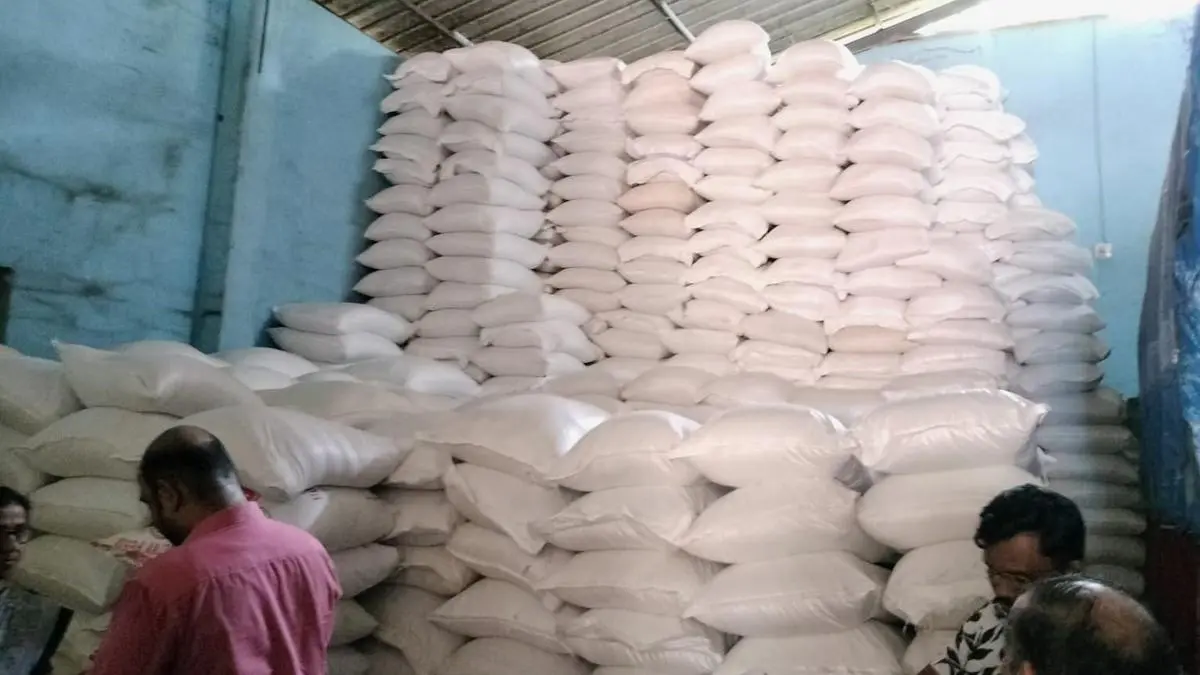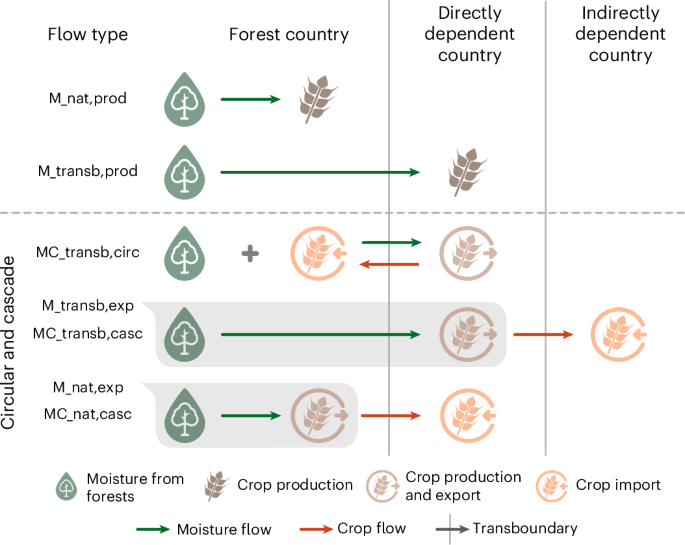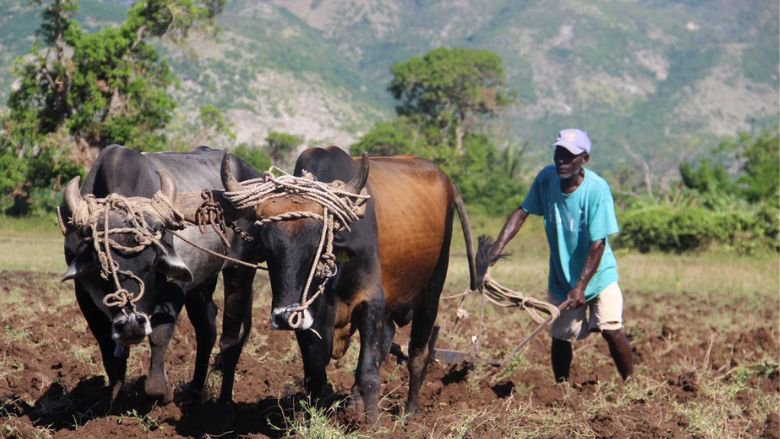International Adoption of India’s Food Stocking Model in Pursuit of Sustainable Development Goals
Global Interest in a National Food Security Framework
- India’s public foodgrain stocking model is gaining significant international attention from G-20 nations, including Germany and Brazil.
- This interest is driven by a global imperative to establish resilient food systems, directly aligning with the objectives of Sustainable Development Goal 2 (Zero Hunger).
- The model is being evaluated for its effectiveness in creating strategic food reserves, a critical mechanism for ensuring stable and accessible food supplies for all, as targeted by the SDGs.
Alignment with Key Sustainable Development Goals (SDGs)
- SDG 2 (Zero Hunger): The core function of the model is to ensure food security by procuring grains for distribution to vulnerable populations, directly addressing targets for ending hunger and ensuring access to safe, nutritious, and sufficient food.
- SDG 1 (No Poverty): The Minimum Support Price (MSP) system provides a stable income for millions of small and marginal farmers, contributing to poverty reduction and economic stability in rural communities.
- SDG 10 (Reduced Inequalities): By providing food grains to the economically disadvantaged at subsidized rates or free of cost, the program directly works to reduce inequality in access to basic necessities.
- SDG 17 (Partnerships for the Goals): The G-20’s collaborative examination of the model and the development of a consensus paper represent a multilateral partnership aimed at sharing knowledge and policy solutions to achieve global food security.
Policy Implications and International Dialogue
- Brazil is reportedly deliberating a crop procurement module based on India’s MSP system to enhance support for its small-scale farmers, a key demographic for achieving SDG 2.3.
- Germany is exploring a similar food stocking system to ensure price stability and domestic food security, recognizing its importance in mitigating the effects of global crises like pandemics.
- South Africa has emphasized the need for food reserves to be “targeted, effective, and non-distorting,” calling for policy coherence across sectors to achieve sustainable results in line with the 2030 Agenda.
- A G-20 consensus paper is anticipated to advocate for the creation of food reserves as a cornerstone of national food security strategies.
Challenges within Global Trade Frameworks
- The model continues to face opposition at the World Trade Organization (WTO), with nations like the US and Paraguay questioning India’s MSP for rice.
- India defends its program by asserting that it supports small farmers, feeds the poor, and contributes to global price stability, thereby ensuring food security for Least Developed Countries (LDCs) and vulnerable nations, which is a fundamental aspect of the global SDG framework.
Analysis of SDGs, Targets, and Indicators
1. Which SDGs are addressed or connected to the issues highlighted in the article?
- SDG 2: Zero Hunger – This is the primary goal addressed, focusing on food security, supporting small farmers, and stabilizing food markets through food reserves and price support mechanisms.
- SDG 1: No Poverty – The article connects food policy to poverty reduction by mentioning how India’s Minimum Support Price (MSP) scheme supports small and marginal farmers and how food distribution systems feed the poor and vulnerable populations.
- SDG 17: Partnerships for the Goals – The article highlights international cooperation and policy discussions within the G-20 and the World Trade Organization (WTO) regarding food security, trade policies, and agricultural subsidies, which are central to this goal.
2. What specific targets under those SDGs can be identified based on the article’s content?
-
SDG 2: Zero Hunger
- Target 2.1: By 2030, end hunger and ensure access by all people, in particular the poor and people in vulnerable situations, including infants, to safe, nutritious and sufficient food all year round. The article discusses India’s system of distributing grains to vulnerable populations free of cost to ensure food security.
- Target 2.3: By 2030, double the agricultural productivity and incomes of small-scale food producers, in particular women, indigenous peoples, family farmers, pastoralists and fishers, including through secure and equal access to land, other productive resources and inputs, knowledge, financial services, markets and opportunities for value addition and non-farm employment. The article mentions India’s MSP scheme, which aims to support small and marginal farmers, and Brazil’s interest in a similar model to help its small farmers.
- Target 2.b: Correct and prevent trade restrictions and distortions in world agricultural markets, including through the parallel elimination of all forms of agricultural export subsidies and all export measures with equivalent effect, in accordance with the mandate of the Doha Development Round. The article details the ongoing debate at the WTO, where the US and other countries have questioned India’s MSP scheme and its potential to distort trade, while India argues it keeps global prices in check.
- Target 2.c: Adopt measures to ensure the proper functioning of food commodity markets and their derivatives and facilitate timely access to market information, including on food reserves, in order to help limit extreme food price volatility. The article’s central theme is the use of food reserves (stocking) to ensure price stability and domestic food security, a model Germany is reportedly looking to emulate.
-
SDG 1: No Poverty
- Target 1.3: Implement nationally appropriate social protection systems and measures for all, including floors, and by 2030 achieve substantial coverage of the poor and the vulnerable. India’s system of buying grains at MSP and distributing them to the vulnerable population is a direct example of a social protection system discussed in the article.
-
SDG 17: Partnerships for the Goals
- Target 17.10: Promote a universal, rules-based, open, non-discriminatory and equitable multilateral trading system under the World Trade Organization, including through the conclusion of negotiations under its Doha Development Agenda. The article explicitly refers to discussions and disputes at the WTO regarding India’s food stocking and subsidy policies.
- Target 17.14: Enhance policy coherence for sustainable development. The statement from South Africa’s agriculture minister about promoting policy coherence across agriculture, trade, climate, health, and finance within the G-20 Food Security Task Force directly addresses this target.
3. Are there any indicators mentioned or implied in the article that can be used to measure progress towards the identified targets?
-
For Target 2.1 (End Hunger):
- Implied Indicator: The quantity of foodgrains distributed to vulnerable populations. The article mentions India distributes grains free of cost, implying a measurable volume of food aid.
-
For Target 2.3 (Support Small Farmers):
- Mentioned Indicator: The level of the Minimum Support Price (MSP). The article explicitly discusses the raising of the MSP for rice as a measure of government support to farmers.
-
For Target 2.c (Limit Price Volatility):
- Mentioned Indicator: The volume of national foodgrain stocks/reserves. The entire article is centered on the concept of food stocking, with “record stocks” being a key point of discussion.
-
For Target 1.3 (Social Protection):
- Implied Indicator: The number of beneficiaries covered by the public food distribution system. The article refers to the government distributing grains to the “vulnerable population,” implying a target group whose size can be measured.
-
For Target 17.14 (Policy Coherence):
- Mentioned Indicator: The establishment of international mechanisms for policy coherence. The article mentions the “G-20 Food Security Task Force” which is working on a “consensus paper” as a mechanism to achieve policy coherence among member countries.
4. Table of SDGs, Targets, and Indicators
| SDGs | Targets | Indicators (Mentioned or Implied in the Article) |
|---|---|---|
| SDG 2: Zero Hunger | 2.1: End hunger and ensure access to food for the poor and vulnerable. | Quantity of foodgrains distributed to vulnerable populations. |
| 2.3: Double the incomes and productivity of small-scale food producers. | The level of the Minimum Support Price (MSP) for crops. | |
| 2.b: Correct and prevent trade restrictions and distortions in world agricultural markets. | Discussions and disputes at the WTO regarding agricultural subsidies and breaching subsidy limits. | |
| 2.c: Adopt measures to ensure the proper functioning of food commodity markets and limit price volatility. | Volume of national foodgrain stocks/reserves. | |
| SDG 1: No Poverty | 1.3: Implement nationally appropriate social protection systems. | Number of beneficiaries covered by the public food distribution system. |
| SDG 17: Partnerships for the Goals | 17.10: Promote a universal, rules-based multilateral trading system under the WTO. | Joint submissions and debates within the WTO framework. |
| 17.14: Enhance policy coherence for sustainable development. | Establishment of international mechanisms like the G-20 Food Security Task Force and its consensus paper. |
Source: thehindubusinessline.com







